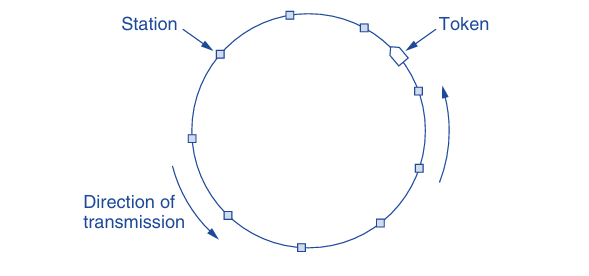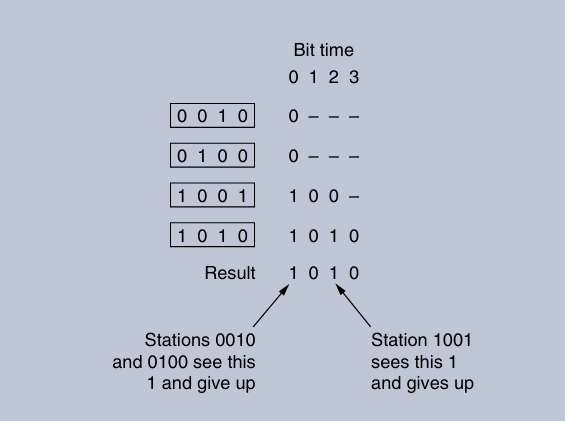Collision-Free Protocols: Ensuring Efficient Network Communication
In the realm of network communication, collisions can significantly hinder performance, particularly in scenarios where multiple devices vie for access to a shared channel. While protocols like Carrier Sense Multiple Access with Collision Detection (CSMA/CD) help mitigate collisions once a station has captured the channel, they do not eliminate the possibility of collisions during the contention period. This is especially problematic in networks with high bandwidth-delay products, such as those with long cables and short frames. In this article, we will explore various collision-free protocols that effectively manage channel access without any collisions, even during contention periods.
Understanding Collision-Free Protocols
Collision-free protocols are designed to prevent any overlap in transmissions, ensuring that only one station transmits at a time. These protocols are particularly beneficial for real-time applications, such as Voice over IP (VoIP), where consistent and predictable transmission times are crucial. Although many of these protocols are not widely implemented in current systems, they offer valuable insights and potential solutions for future networking challenges.
Key Assumptions
For the protocols discussed, we assume the following:
→ There are exactly N stations, each assigned a unique address ranging from 0 to N-1.
→ Propagation delay is negligible, allowing for immediate channel access decisions.
→ The primary question is: which station gets the channel after a successful transmission?
1. Bit-Map Protocol
The Bit-Map Protocol is a straightforward collision-free method that organizes contention periods into discrete slots. Each contention period consists of exactly N slots. Here’s how it works:
→ If Station 0 has data to send, it transmits a 1 bit during slot 0. No other station is allowed to transmit during this slot.
→ Each subsequent station gets the opportunity to transmit a 1 bit during its designated slot (e.g., Station 1 in slot 1, Station 2 in slot 2, and so on).
→ After all N slots have passed, each station knows which stations wish to transmit. They then begin transmitting their frames in numerical order.
This method ensures that there are no collisions since all stations agree on the order of transmission. Once the last station has transmitted, a new N-bit contention period begins. If a station becomes ready to send just after its designated slot, it must wait until the next round.
Performance Analysis
→ Low Load: Under low load conditions, the bit-map will repeat due to a lack of data frames. A low-numbered station may wait an average of 1.5N slots before transmitting, while high-numbered stations typically wait only 0.5N slots.
→ High Load: When all stations have data to send, the overhead per frame is reduced to 1 bit per frame, resulting in an efficiency of d/(d + 1), where d is the size of the data frame
2. Token Passing
Another effective collision-free protocol is Token Passing. This method involves passing a small message called a token from one station to the next in a predefined order. Here’s how it works:
→ Stations are arranged in a logical sequence, either in a ring or on a bus.
→ When a station receives the token, it can transmit its frame if it has data queued. If not, it simply passes the token to the next station.
→ In a token ring network, the token circulates around the ring, allowing each station to send data in turn.
Advantages of Token Passing
→ Fairness: Unlike the bit-map protocol, token passing does not favor low- or high-numbered stations, as all stations have equal opportunity to transmit.
→ Efficiency: The protocol minimizes idle time and maximizes channel utilization, making it suitable for various applications.
3. Binary Countdown
The Binary Countdown protocol addresses the scalability issues of the bit-map protocol by using binary station addresses. Here’s how it works:
→ Each station broadcasts its address as a binary bit string, starting with the highest-order bit.
→ When multiple stations transmit simultaneously, their addresses are combined using a BOOLEAN OR operation.
→ A station that sees a higher-order bit position that is 0 in its address being overwritten by a 1 gives up its attempt to transmit.
Example of Binary Countdown
For instance, if stations with addresses 0010, ** 0100**, 1001, and 1010 attempt to access the channel, the first bit time results in a combined address of 1. Stations 0010 and 0100 will see this and back off, while 1001 and 1010 continue. The process continues until one station successfully transmits its frame.
Efficiency
The channel efficiency of the binary countdown method is given by the formula d/(d + log2 N), where d is the size of the data frame and N is the number of stations. If the frame format is designed such that the sender’s address is the first field, the efficiency can reach 100%, as no bits are wasted.
Conclusion
Collision-free protocols play a crucial role in enhancing network performance by eliminating the possibility of collisions during both contention and transmission periods. By implementing methods such as the Bit-Map Protocol, Token Passing, and Binary Countdown, networks can achieve more efficient communication, particularly in environments where real-time data transmission is essential. As technology evolves, these protocols may offer valuable solutions for future networking challenges, ensuring reliable and efficient communication across diverse applications.
